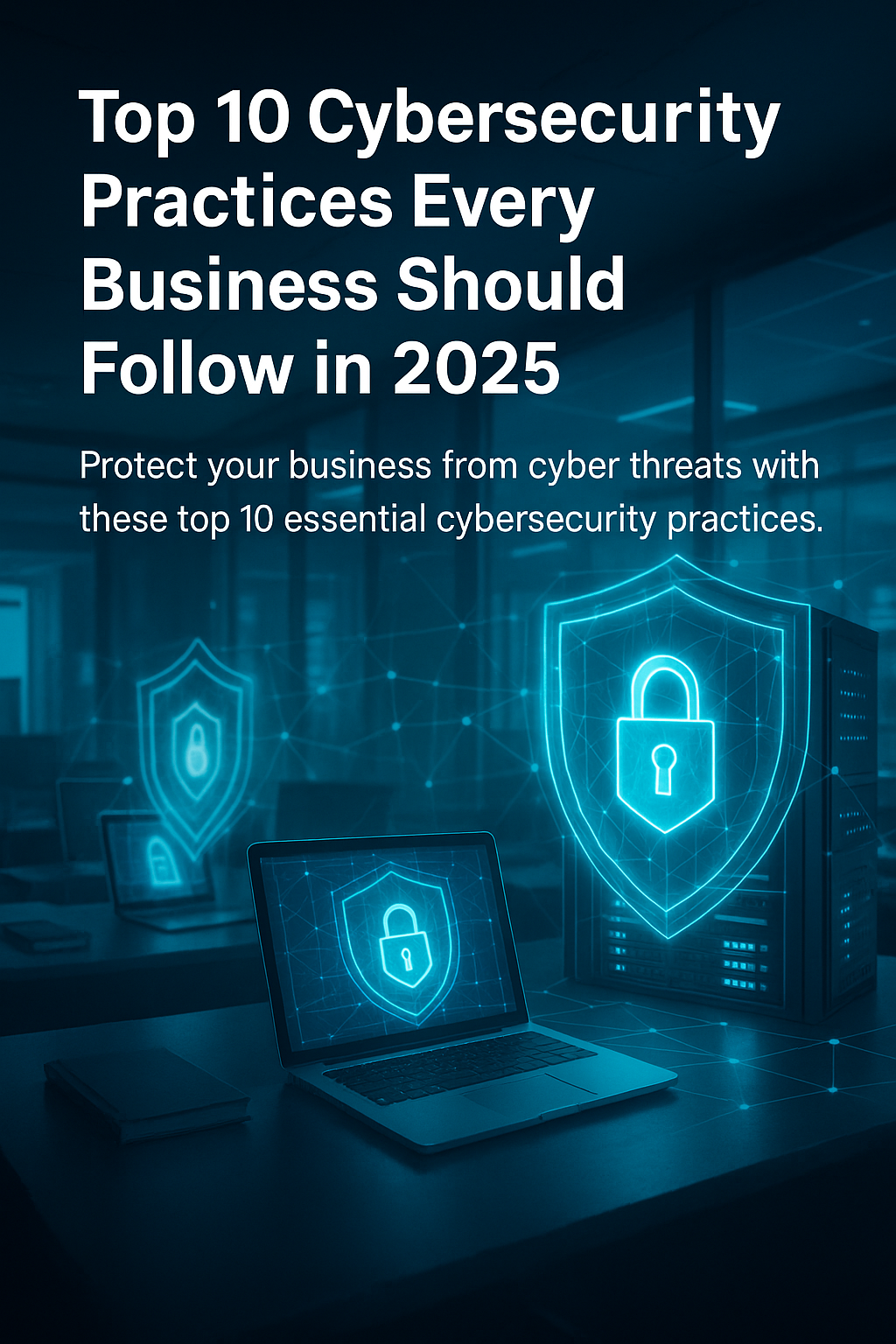
Top 10 Cybersecurity Practices Every Business Should Follow in 2025
Protect your business from cyber threats by adopting these ten essential cybersecurity practices.
In today's digital-first environment, cybersecurity is essential — not merely an option. As businesses increasingly rely on cloud computing, remote work, and online transactions, the threat of cyberattacks is intensifying. Cybercriminals continuously refine their techniques, making it imperative for organizations to uphold strong security measures.
Here are the top 10 cybersecurity practices every business should adopt in 2025:
Implement Multi-Factor Authentication (MFA):
MFA provides an extra layer of security, ensuring that even if passwords are compromised, unauthorized access is still prevented.Regularly Update Software and Systems:
Outdated software is a hacker’s ally. Keep all systems, firewalls, and antivirus software current to address vulnerabilities.Use Strong and Unique Passwords:
Encourage employees to create strong, unique passwords and use password managers to avoid repetition.Conduct Regular Security Audits:
Regular audits help identify vulnerabilities in your infrastructure before they are exploited by attackers.Encrypt Sensitive Data:
Data encryption ensures that even if information is compromised, it remains unreadable and useless to hackers.Train Employees on Cyber Awareness:
Human error is responsible for most breaches. Regular training helps employees recognize phishing emails, scams, and suspicious activities.Use a Secure Backup Strategy:
Maintain encrypted backups in multiple locations to protect against ransomware or accidental data loss.Limit Access to Critical Systems:
Follow the “least privilege principle” — granting employees access only to the data necessary for their roles.Install and Monitor Firewalls:
Firewalls act as the first line of defense against unauthorized access and suspicious traffic.Develop an Incident Response Plan:
Prepare for the worst. A comprehensive plan minimizes damage and enables swift recovery following an attack.
By implementing these best practices, businesses can significantly reduce the risk of cyber threats and build trust with their customers. Remember — cybersecurity is not a one-time setup; it’s an ongoing process that evolves alongside technology.